Samsung Galaxy S5 vs HTC One (M8)
Introduction
In case you've been following PhoneArena for the past few months, or even years, then you know that there hardly is a bigger rivalry than that between the South Koreans from Samsung and the Taiwanese from HTC. Well, probably except that between Samsung and Apple, but if we limit ourselves to the boundaries of the Android market, then we definitely cannot think of a bigger rivalry. Obviously, both companies have their own arguments in this struggle, with both actually making a good point most of the qtime. For example, Samsung keeps bugging HTC for its sub-par UltraPixel camera, while HTC continues to point at Samsung's overly-plastic phone designs.
No matter where you stand with regards to this eternal conflict, we all have to give credit to these two companies for relentlessly trying to keep and improve their leading positions, as well as for crafting some of the most amazing smartphones the world has ever seen.
With all of that said, it's time to officially kick-off the competition between this year's contenders – the Galaxy S5 and the One (M8)!
Design
As a whole, both devices look quite good, with the HTC One (M8) having the more striking and premium appearance of the two. In terms of comfort, however, the GS5 proves to be the better handset, as its rubbery plastic material feels warm and inviting to the touch, whereas the cold and hard surface of the all-metal HTC One just isn't so comfortable to hold.
In terms of dimensions, both handsets are quite imposing. The HTC One (M8) (5.76 x 2.78 x 0.37 inches (146.36 x 70.6 x 9.35)) is a bit taller, but it kind of makes up for it by also being a bit narrower than the Galaxy S5 (5.59 x 2.85 x 0.32 inches (142 x 72.5 x 8.1)). Other than that, the GS5 is a bit slimmer than its opponent. When it comes to weight, these devices are by no means feather-light, but the Samsung Galaxy S5 definitely feels a bit lighter with its 5.11 oz (145 g), compared to the HTC One (M8)'s 5.64 oz (160 g).
Both handsets have great physical buttons – all of them are clicky and mostly easy to feel by touch alone.
One definite advantage that the Samsung Galaxy S5 has is found with its IP 67 certification. This means that it's completely dust-proof, plus it can also stay water-tight if it's submerged in up to 1 meter of water for up to 30 minutes. Meanwhile, the HTC One (M8) only has IP x3 certification, which means that it's not dust-resistant, and it can only withstand small sprays of water, like rain.
Display
Without a doubt, being punchy and extra-vivid is Super AMOLED's specialty. However, the LCD of the One (M8) is also nicely saturated and vibrant, all the while being much more natural-looking. The trouble with the GS5 screen is that it lacks enough red color, resulting in rather cold visuals. The One M8 could be a bit warmer as well, but on the whole, its color balance is much better, delivering a much more realistic image.
With its slightly higher maximum brightness, the HTC One (M8) manages to be a bit easier to view outdoors, although the S5 is also pretty decent in this respect. Viewing angles are good on both phones - the GS5 retains its brightness and contrast, but loses some color accuracy, while the One (M8) keeps its colors in check, but loses contrast and brightness.
However, the Galaxy S5 does have the upper hand in the minimum brightness area, as its screen has been designed so that its brightness can go as low as 2 nits, enabling a super-comfortable viewing experience in the dark – something that you can't have with the One (M8) and its 16-nit minimum brightness.
In terms of general specs, the Galaxy S5's screen gets an ever so slightly larger diagonal, at 5.1 inches, while the One (M8) sports a 5” one. However, viewing area is often significantly bigger with the Galaxy S5, since it doesn't use on-screen navigation buttons, such as those of the One (M8). Resolution-wise, both handsets use 1080 x 1920 pixels, resulting in a 441 ppi density for the M8 and 432 ppi density for the GS5. Even though the One (M8) seems to have a slight advantage in this area, there practically isn't any noticeable difference between the two with regards to picture clarity and level of detail – both are extremely good!
Samsung Galaxy S5 360-Degrees View:
HTC One (M8) 360-Degrees View:
Interface and Functionality
With this latest version of Sense, the HTC One (M8) has one of the most visually-pleasing custom Android user experiences. HTC's software is consistent, polished and quite speedy. So, what's going on on Samsung's front then? Well, we're glad to report that the South Korean giant has seriously improved upon the offering it had in its last flagship, and as a result, the TouchWiz user interface has become more modern-looking, flatter and perfected. It's still not as consistent as HTC's UI, leaving some room for improvement, but overall, with these latest updates, we can now safely say that both companies are offering perfectly usable, robust Android variations. Yes, they are still very different, meaning that we can't really proclaim a definite leader, but that's not necessarily a bad thing, as both are awesome in their own way.
Sense UI and TouchWiz UI work as any other Android launcher – you have your homescreen for widgets and icons, and there's also the app launcher, which scrolls vertically for the HTC One (M8) and horizontally for the Samsung Galaxy S5. A differentiating feature for the HTC is the BlinkFeed social and news aggregator, though Samsung is now using its My Magazine feature in almost exactly the same manner – the company has even positioned My Magazine to the left-most part of the homescreen, identically to HTC's BlinkFeed. However, same as on the One (M8), this functionality can be disabled on the S5, if you don't find much use for it.
When it comes to core apps, such as phonebook and messaging, Samsung and HTC have done some renovating work, but once again, the manufacturers have worked in the opposite directions. While HTC has chosen to brighten and lighten the graphical environment of its apps, Samsung has flattened the UI, and kept its darker GUI theme that works nicely with the Super AMOLED screen, which consumes less power when displaying darker colors.
At first glance, it may seem that the Samsung Galaxy S5 and HTC One (M8) use the same exact chipset model: Snapdragon 801. However, upon closer inspection, it becomes evident that there's a bit of a difference: the GS5 has the slightly more powerful MSM8974-AC variation, while the One (M8) has the MSM8974-AB version, which is clocked slightly lower. To be precise, the quad-core Krait 400 CPU of the Galaxy S5 can be revved up to 2.5 GHz, while the quad-core Krait 400 CPU of the One (M8) can go up to 2.3 GHz. Theoretically, the chip inside the Galaxy S5 should be a tad faster, but when it comes to real-life performance, we doubt it that there's going to be that much of a noticeable difference.
When it comes to the graphics processing units used by the two super-phones, both rely on the tried and true Adreno 330 GPU, which can provide more than enough horsepower in order to guarantee a high frame-rate in games and other graphics-intensive tasks.
Both phones are armed with 2 GB RAM, and even though some devices like the Galaxy Note 3 and Xperia Z2 feature even more system memory, we think that 2 gigs are perfectly sufficient at this time.
Both handsets are available with 16 or 32 GB of internal storage, but should you need more, both can offer you the comfort of a microSD card slot (for cards of up to 128 GB capacity).
While most of the novelty in the HTC One (M8) is centered around the Duo camera setup, the Samsung Galaxy S5 offers some additional goodies that are nowhere to be found in HTC's offering. Namely, Samsung's device sports a fingerprint scanner, which may not be of the highest quality or implementation, but it's still usable, and can be utilized for secure unlocking or PayPal purchase authorization, which is a cool feature to have.
Meanwhile, there's also a dedicated heart-rate monitor in the GS5, positioned right next to the handset's LED flash. Not that you can't get similar functionality by installing a third-party app on the One (M8), but the accuracy and integration of the Galaxy S5's pulse monitor are supposed to be better, though results may vary. All in all, we don't consider the lack of these features in the One a dealbreaker in any way.
Processor and Memory
At first glance, it may seem that the Samsung Galaxy S5 and HTC One (M8) use the same exact chipset model: Snapdragon 801. However, upon closer inspection, it becomes evident that there's a bit of a difference: the GS5 has the slightly more powerful MSM8974-AC variation, while the One (M8) has the MSM8974-AB version, which is clocked slightly lower. To be precise, the quad-core Krait 400 CPU of the Galaxy S5 can be revved up to 2.5 GHz, while the quad-core Krait 400 CPU of the One (M8) can go up to 2.3 GHz. Theoretically, the chip inside the Galaxy S5 should be a tad faster, but when it comes to real-life performance, we doubt it that there's going to be that much of a noticeable difference.
When it comes to the graphics processing units used by the two super-phones, both rely on the tried and true Adreno 330 GPU, which can provide more than enough horsepower in order to guarantee a high frame-rate in games and other graphics-intensive tasks.
Both phones are armed with 2 GB RAM, and even though some devices like the Galaxy Note 3 and Xperia Z2 feature even more system memory, we think that 2 gigs are perfectly sufficient at this time.
Both handsets are available with 16 or 32 GB of internal storage, but should you need more, both can offer you the comfort of a microSD card slot (for cards of up to 128 GB capacity).
Software features
While most of the novelty in the HTC One (M8) is centered around the Duo camera setup, the Samsung Galaxy S5 offers some additional goodies that are nowhere to be found in HTC's offering. Namely, Samsung's device sports a fingerprint scanner, which may not be of the highest quality or implementation, but it's still usable, and can be utilized for secure unlocking or PayPal purchase authorization, which is a cool feature to have.
Meanwhile, there's also a dedicated heart-rate monitor in the GS5, positioned right next to the handset's LED flash. Not that you can't get similar functionality by installing a third-party app on the One (M8), but the accuracy and integration of the Galaxy S5's pulse monitor are supposed to be better, though results may vary. All in all, we don't consider the lack of these features in the One a dealbreaker in any way.
Internet and Connectivity
Of course, they have Google's Chrome browser, but the Galaxy S5 and One (M8) think they can offer an even more compelling browsing offering, courtesy of their custom browser applications. To an extent, we tend to agree with them, since both custom apps are incredibly fast and capable. Needless to say, both handsets offer superb browsing experience, as web page navigation is fast and smooth with either browser.
In terms of connectivity, we guess it wouldn't be a surprise if we tell you that both the Galaxy S5 and One (M8) feature LTE and HSPA+ connectivity options for maximum flexibility. However, the S5 can theoretically achieve higher connection speeds, though you'd really need to have ideal network coverage in order to take advantage of this benefit. If no LTE coverage is available, both phones will default to HSPA+ connectivity with maximum downlink speeds of 42.2 Mbit/s, and uplink speeds of 5.76 Mbit/s.
The Galaxy S5 supports Wi-Fi 802.11 protocols a, b, g, n, ac, while the One (M8) makes use of 802.11 a, b, g, n, n 5GHz, ac. Of course, NFC is available with both, and so is infrared, but only the GS5 has a microUSB 3.0 port, as the One (M8) has a standard microUSB 2.0 port.
When it comes to GPS, the One slightly trumps its South Korean opponent by having support for GPS and Glonass, while the GS5 only has GPS.
Camera
There's quite a bit of controversy surrounding HTC's UltraPixel camera, as its large, 2-micron pixels (due to its sensor size being 1/3”) are supposed to reduce noise and provide superior low-light performance; however, the low, 4 MP resolution doesn't allow the camera to capture nearly enough detail to make its images competitive with those of the other leading cameras.
Well, that's obviously not the case with the Samsung Galaxy S5, as its 16 MP camera doesn't seem to make any compromises. Not only is the resolution very high, but the sensor size itself is also pretty big – 1 / 2.5”, resulting in a decent pixel size of 1.12 micron. When it comes to aperture size, that of the GS5 is slightly narrower than that of the One (M8): F2.2 vs F2.0, respectively. Lower aperture numbers mean that more light can reach the camera sensor, but that's just one of a number of factors that play a role in the production of a photo.
In terms of camera software, Samsung has, thankfully, greatly simplified its app. The new interface of the Galaxy S5's camera app is relatively intuitive, though it might take a while for users of previous Galaxy devices to adjust. That's mostly because certain modes and options have been moved from one menu to another, while a few new additions have also appeared. For example, the HDR mode is no longer part of the main shooting modes menu, and has been moved to the new, general settings menu, which presents us with a nice overview of a plethora of camera settings, like ISO, effects, focusing mode, and more. Meanwhile, there are some notable newcomers, such as the Virtual tour shooting mode, which lets you create Google Maps Street View-like experiences with your phone.
Moving on to the camera app of the HTC One (M8), we're once again treated to a brand new UI organization. First, there's a main 'shooting modes menu', which houses things like the video mode, Zoe camera (captures a short video along with an image, in order to produce some fancy video-plus-image collages for you to enjoy), Selfie mode (front-facing camera) and 360 panorama. The settings menu reveals the kind of options a true photography enthusiast may cherish, such as white balance, ISO, exposure and effects. In short, both camera apps present us with more than enough flexibility – you just need to give yourself some time to experiment with these settings and see what works best for you in different situations.
HTC's latest and greatest adds some fun differentiation in the camera department thanks to its Duo camera setup. The second camera on the back of the One (M8) captures depth information, allowing you to apply a bunch of cool-looking effects to your photos, with probably the most useful one being shallow depth of field. Meanwhile, the GS5 tries to replicate this functionality through one of its shooting modes, but achieving a similar depth effect is harder and takes longer.
So, we now know how things stand on paper. Let's take a look at the actual photographs! Of course, the first things that we notice is the glaring lack of resolution and details in the One (M8)'s photos. If you're viewing them from a zoomed out view (as we all typically view our photos), there isn't such a great difference, but should you examine them in actual size, it immediately becomes clear how much more data the GS5 captures in its shots. While both cameras tend to produce mostly natural-looking color tones, it seems to us that the GS5 also has a slight advantage in this area, as the images of the M8 happen to be a bit colder than needed. When it comes to exposure, Galaxy S5 once again takes the lead, as in most cases, it goes for slightly more appropriate settings than the One (M8)'s UltraPixel shooter, making its images appear livelier and more contrasty.
Yet another area where the Galaxy S5's camera gains the upper hand is video recording. Not only does it feature a 4K rec mode, but the quality of its footage is predominantly better, once again due to livelier and more realistic colors. However, the fact that both handsets lack optical image stabilization is blatantly obvious, as you can see due to their constant jerkiness. It really makes us think that OIS is increasingly becoming a must-have feature in smartphone cameras these days.
When it comes to their added value, the One (M8) attempts to make a statement with its Duo camera setup and effects. As we said in the beginning of this part, the biggest benefit of having that second camera is the ability to make those photographs with shallow depth of field relatively easily. However, the Galaxy S5 features similar functionality, without having to tug along a second camera for the task. The cool things about the GS5's shooter is that it can focus on objects that are very close to the sensor, nicely blurring all that is in the background. This is a great if you enjoy taking macro shots. And when it comes to portraits, the Galaxy S5 has the "Selective Focus" mode, which creates an effect similar to that of the One (M8), although it's not so pronounced.
Multimedia
The good news is that we're dealing with two smartphones that make multimedia content come to life with their large and vibrant displays. At 5” for the One (M8), and 5.1” for the Galaxy S5, there's more than enough viewing area with both handsets. However, the Samsung Galaxy S5 does have some advantage here, as it doesn't have on-screen navigation buttons, thus enabling all third-party apps and games (not just those optimized for Immersive mode) to take advantage of the full screen area.
It's important to note here once again that there is a difference in the way both displays reproduce colors, with the GS5 being more pumped-up and unrealistic, while the M8 has not-so-flashy, but more accurate colors. Really, it's up to you to decide which one you'd prefer, but in our opinion, you'll most certainly enjoy either phone, as both are simply cutting-edge in what they do.
The stereo BoomSound speakers of the HTC One (M8) are among its key features, and we have to say that they really do a very good job at enhancing our media experience, especially when watching video or playing games. On the other hand, the solo speaker of the Galaxy S5 is also pretty loud, but it can't really deliver the same amount of depth and clarity as the M8's BoomSound speakers.
Other than that, the music players on both phones are more than adequate. Once again, that of the HTC One (M8) has the more flashy visuals, but the GS5's player is also quite fresh, plus it features some neat options to play with. The earphones that come with the One (M8) tend to sound a bit more lively overall, having a nice and thick base. Those of the GS5 aren't too bad, but fail to capture our interest with their overly flat sound.
Other than that, the music players on both phones are more than adequate. Once again, that of the HTC One (M8) has the more flashy visuals, but the GS5's player is also quite fresh, plus it features some neat options to play with. The earphones that come with the One (M8) tend to sound a bit more lively overall, having a nice and thick base. Those of the GS5 aren't too bad, but fail to capture our interest with their overly flat sound.
Call quality
The HTC One (M8) establishes itself as our preferred handset for phone calls, as its earpiece delivers loud and clear tones, without sounding too strained or sharp. The Galaxy S5, on the other hand, also achieves good volume, but it tends to sound a bit muffled and unclear. On the other end of the line, things are once again on the louder side, though we aren't impressed by the sounding of the S5's microphone, which fails to transmit voices with at least a portion of their fullness. The One (M8) is a bit better in this respect, though there's always room for improvement as far as call quality goes.
The Galaxy S5's solo loudspeaker has a surprisingly strong and deep sound, that is, until you play your tunes through the stereo BoomSound speakers of the One (M8), which sound even better! Truth be told, we're glad that Samsung pays attention to all aspects of its device and is trying to deliver on all fronts. However, being among its key features, the BoomSound front-facing speaker setup in the M8 remains unrivaled in terms of sound loudness and depth.
Battery
As far as battery life goes, both the Samsung Galaxy S5 and HTC One (M8) should perform admirably. Both are said to offer extremely long continuous talk time – 21 hours for the Galaxy S5, and 20 hours for the One (M8). Stand-by time stands at 20.7 days for the One, and 16.2 days for the GS5. Naturally, exactly what kind of battery life you're going to get out of your phone depends on a number of factors, one of which being your personal usage pattern.
Taking a look at the results from our custom battery life tests, the Galaxy S5 has managed to outlast its opponent with a respectable result of 7h 38 min, but the One (M8) remains just slightly behind with 7h 12 min. Our battery benchmark is designed to replicate typical real-world usage, and while this kind of stuff varies from one consumer to another, the data that we get from the test typically applies to a wide range of usage habits. When all is said and done, we're most certain that either phone would able to deliver at least a full day of battery life even to the most hardcore users out there.
Conclusion
Well, we've been patient for these two particular smartphones, and now that they are both here, the only thing left to do is to make the difficult decision of which one to choose. Quite frankly, both the Samsung Galaxy S5, and the HTC One (M8) are superb devices that can offer you an astonishing user experience throughout most areas. Some of the rare exceptions where these two are faltering are the UltraPixel camera of the One (M8), which continues to lag behind its rivals when it comes to quality, and the other is the somewhat unnatural color tones of the Galaxy S5's AMOLED screen (though they are admittedly punchy and eye-catching).
Leaving these few weaknesses aside, it's clear that you simply can't go wrong with either of these, as they pack a tremendous amount of goodies to further complement their premium set of core features. The main distinguishing feature of the HTC One (M8) is, naturally, its premium, all-metal design, which is something that you don't get with the Galaxy S5 and its perforated plastic body. Without a doubt, the M8 feels like the more expensive product of the two, but it's also the colder product of the two. What we mean by this is that it's very likely for the Galaxy S5 to physically be the more comfortable phone to use for most people out there, and that shouldn't be overlooked.
At the end of the day, Samsung and HTC are once again neck and neck with their latest flagship smartphones. The Galaxy S5 proves to be one step ahead with its superior camera, but the One (M8) kind of makes up for it with its premium design, more natural-looking screen and better speakers. The choice is yours!

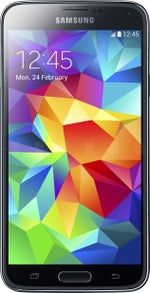



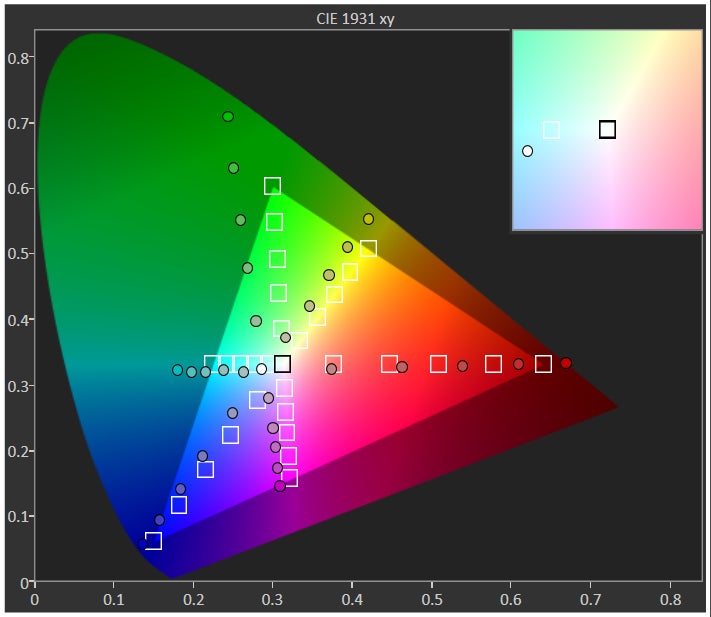







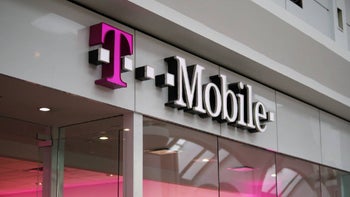

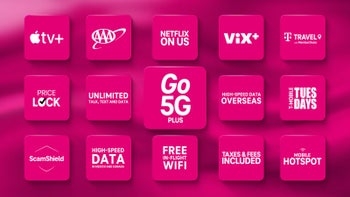

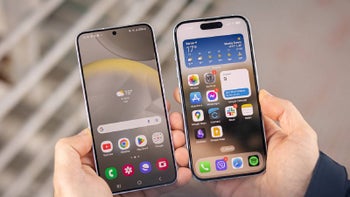
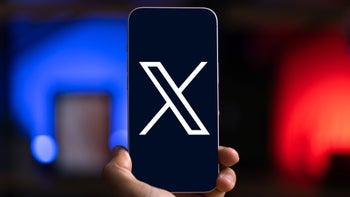
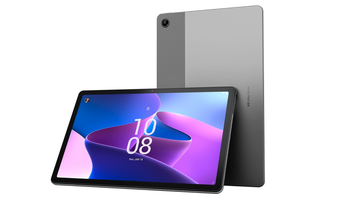
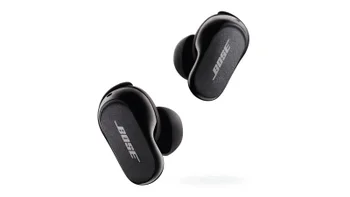
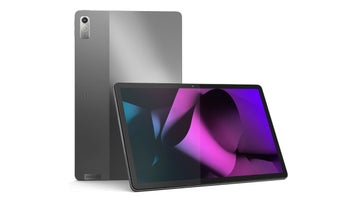
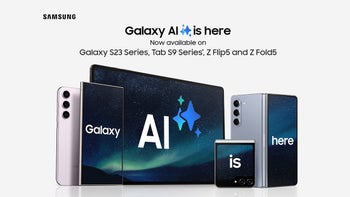






Things that are NOT allowed: